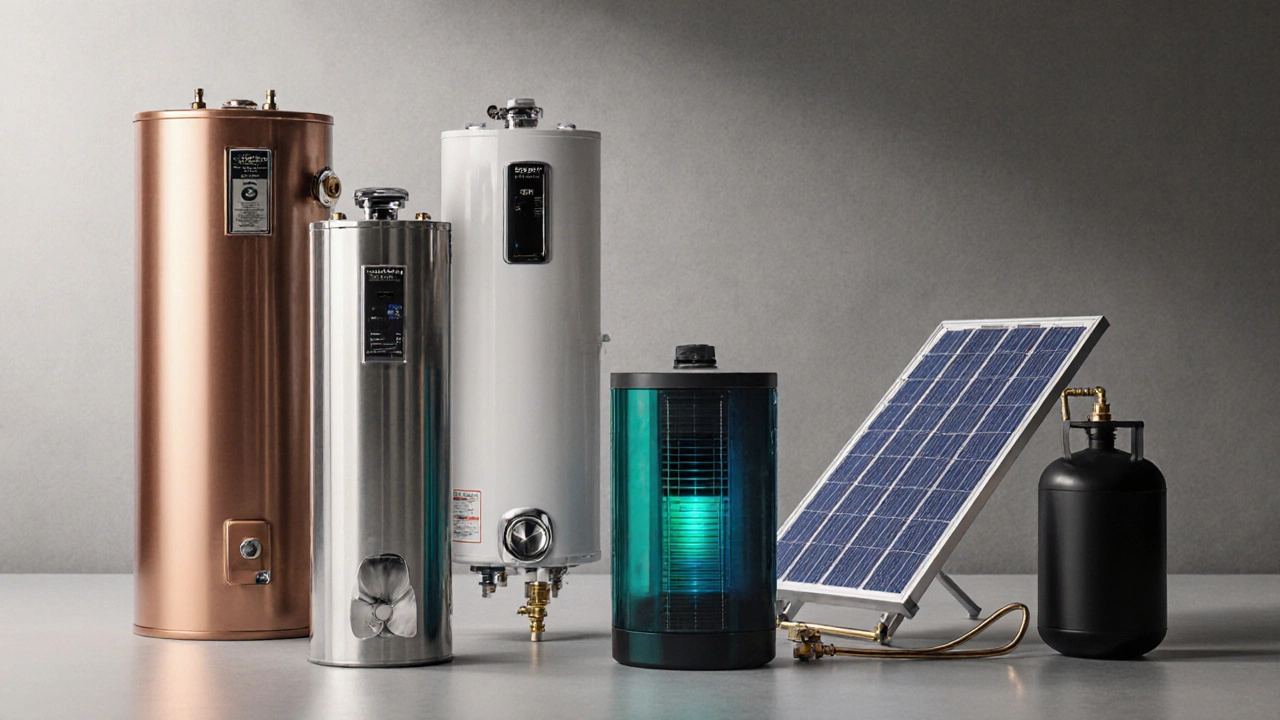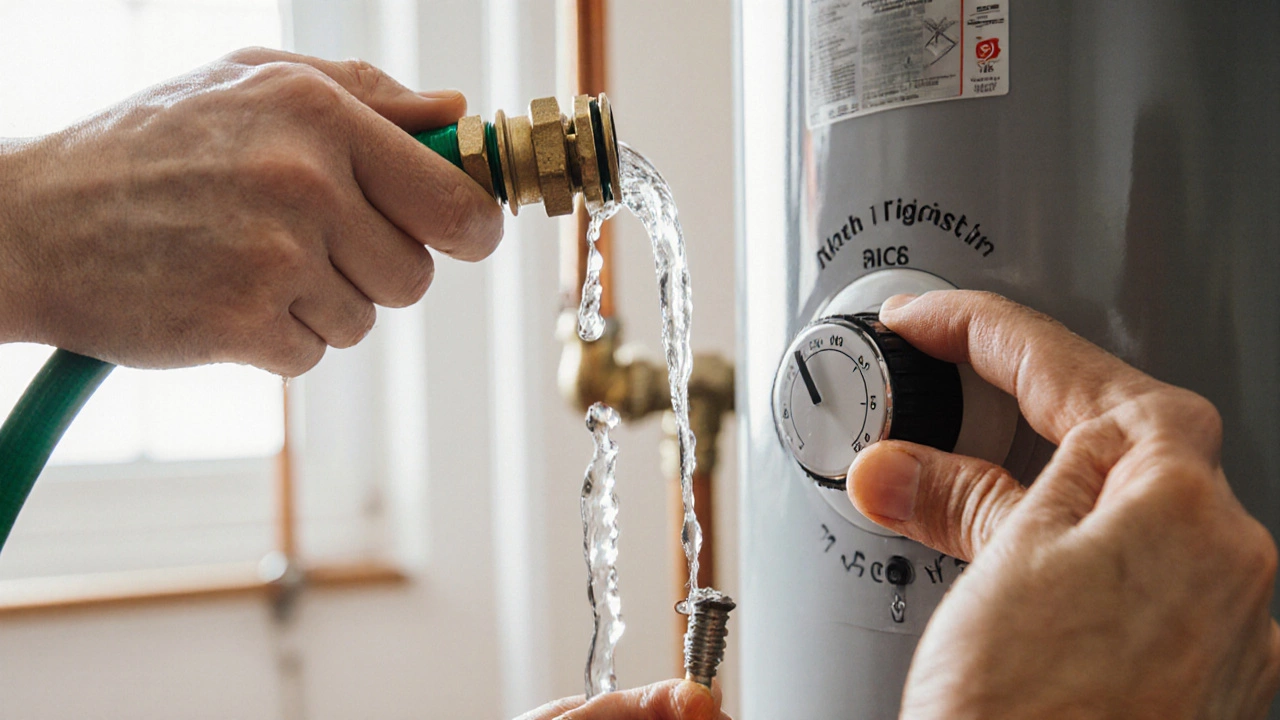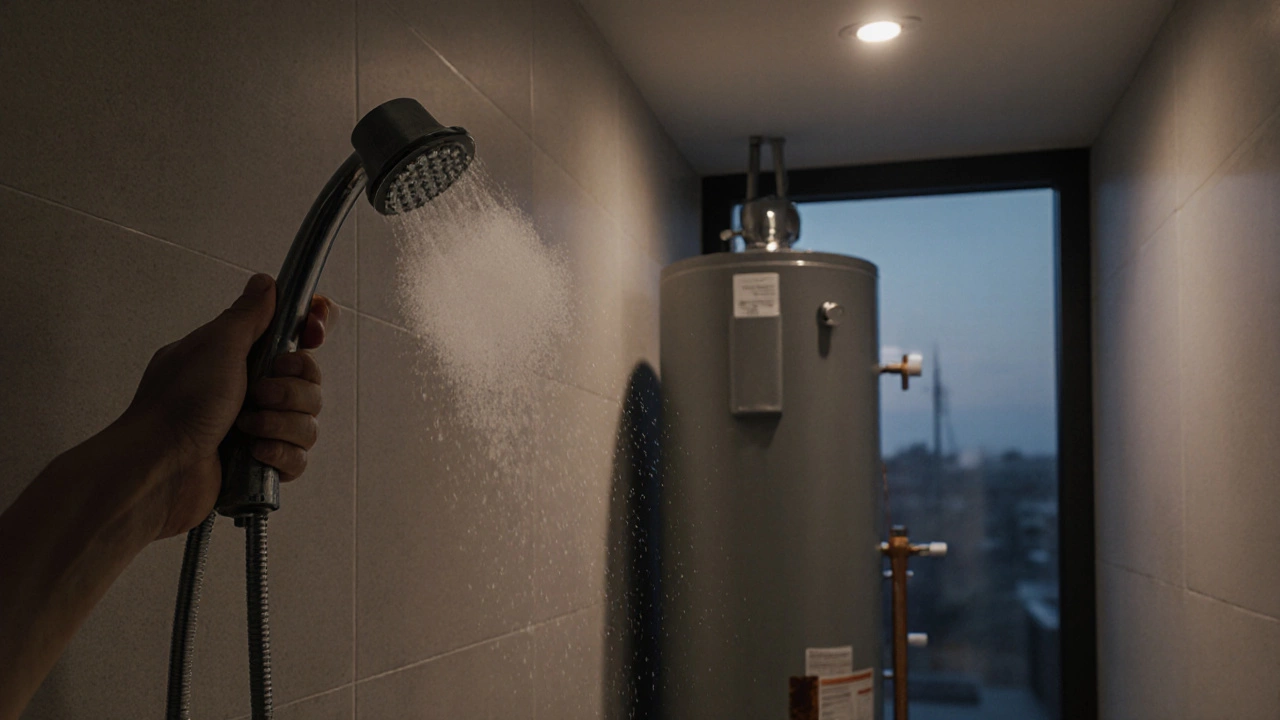Water Heater Lifespan Calculator
Estimated Lifespan Result
When your hot water suddenly runs cold or you hear strange noises from the tank, the first question that pops up is usually "how long should a water heater last?" Knowing the expected water heater lifespan helps you plan maintenance, budget for a replacement, and avoid nasty surprises. Below you’ll get the hard numbers, the factors that push those numbers up or down, and practical steps to squeeze the most years out of your unit.
Key Takeaways
- Standard tank water heaters typically last 8‑12 years; tankless models can reach 15‑20 years.
- Water quality, usage patterns, and regular maintenance are the biggest lifespan drivers.
- Early warning signs include rusty water, rumbling noises, and leaking at the base.
- Annual flushing, anode‑rod checks, and temperature setting adjustments can add 2‑4 years.
- When repair costs exceed 50% of a new unit’s price, replacement is usually the smarter choice.
Water heater is a home appliance that heats and stores water for domestic use, typically powered by electricity, natural gas, or heat‑pump technology. Its core components-burner or heating element, tank, thermostat, and safety valves-work together to deliver hot water on demand.
Typical Lifespan by Heater Type
Not all water heaters age the same way. Below is a quick overview of the most common types you’ll encounter in New Zealand homes.
| Type | Typical Lifespan | Energy Source | Initial Cost (NZD) | Pros | Cons |
|---|---|---|---|---|---|
| Tank water heater | 8‑12 years | Electric or gas | $800‑$1,500 | Low upfront cost, simple installation | Energy loss from standby heat, larger footprint |
| Tankless water heater | 15‑20 years | Electric or gas | $1,200‑$2,500 | Endless hot water, compact size, no standby loss | Higher upfront cost, may need upgrades to gas/electric service |
| Heat‑pump water heater | 12‑15 years | Electric (uses ambient heat) | $1,800‑$3,000 | Very efficient, lower operating bills | Needs space with good airflow, performance drops in cold climates |
| Solar‑thermal water heater | 20+ years | Sunlight (with backup electric/gas) | $2,500‑$5,000 | Minimal operating cost, sustainable | High installation cost, dependent on sun exposure |

What Affects a Water Heater’s Life?
Even within the same type, lifespans can vary dramatically. Here are the top variables you can actually control.
- Water Quality: Hard water deposits on the heating element (electric) or heat‑exchange surfaces (gas) accelerate corrosion. Installing a water softener can add 2‑3 years.
- Usage Patterns: Families that run multiple showers back‑to‑back or use a washing machine daily demand more heating cycles, which wear components faster.
- Installation Quality: Poor venting on gas units, incorrect pipe sizing, or insufficient clearances can cause overheating and premature failure.
- Temperature Setting: A thermostat set above 60°C (140°F) speeds up mineral buildup. Keeping it at 55°C (130°F) balances safety and longevity.
- Maintenance Frequency: Regular flushing removes sediment; checking the anode rod prevents tank corrosion.
- Ambient Climate: In colder regions, heat‑pump units work harder, potentially shortening their service life.
Warning Signs Your Heater Is Nearing End‑of‑Life
Spotting trouble early can save you from a cold shower and an emergency repair bill.
- Rusty or Discolored Water: Indicates tank corrosion or a failing anode rod.
- Strange Noises: Rumbling, popping, or whining often means sediment buildup causing overheating.
- Leaks at the Base: A wet floor is a classic sign the tank’s interior has cracked.
- Inconsistent Temperature: Hot water that rapidly cools or fluctuates points to thermostat or heating element issues.
- Frequent Cycling: The heater turning on and off every few minutes suggests a failing component.
- Age Exceeding Expected Lifespan: Even without symptoms, a unit older than its typical lifespan warrants a professional evaluation.
Maintenance Practices to Extend Lifespan
Think of maintenance as a yearly health check‑up for your heater. Follow these steps to keep the system humming.
- Flush the Tank Annually
- Turn off power/gas and let the water cool.
- Connect a garden hose to the drain valve, open the valve, and let water run until it’s clear.
- Close the valve, refill, and turn the unit back on.
- Inspect and Replace the Anode Rod Every 2‑3 Years
- Remove the rod (usually at the top of the tank), check for heavy corrosion.
- If it’s more than 50% corroded, replace it with a magnesium or aluminum‑zinc rod.
- Check the Thermostat Setting
- Locate the thermostat (often behind a cover panel).
- Set it to 55°C (130°F) for optimal safety and efficiency.
- Test the Pressure‑Relief Valve
- Lift the lever briefly; water should flow out and then stop.
- Replace if it leaks continuously.
- Inspect Electrical Connections (Electric Units)
- Look for loose wires or corrosion; tighten or replace as needed.
- Schedule Professional Service Every 5 Years
- A qualified technician can spot hidden issues like gas‑line leaks or heat‑exchanger cracks.

Cost Considerations: Repair vs Replace
When a part fails, the instinct is to fix it. But the numbers often tell a different story.
| Scenario | Typical Repair Cost (NZD) | New Unit Cost (NZD) | Decision Guideline |
|---|---|---|---|
| Minor component (e.g., thermostat) | $150‑$300 | $800‑$3,000 | Repair almost always makes sense. |
| Major component (e.g., heating element, gas valve) | $500‑$1,200 | $800‑$3,000 | If repair >50% of new cost, replace. |
| Tank corrosion or persistent leaks | $1,000‑$2,000 | $800‑$3,000 | Replace; a corroded tank is a ticking time bomb. |
Beyond pure dollars, think about energy efficiency. Newer models, especially heat‑pump and high‑efficiency gas units, can shave 10‑30% off your annual energy bill, speeding up the return on investment.
Bottom Line
If your water heater is still within the typical lifespan range and you’ve kept up with flushing, anode‑rod checks, and thermostat tweaks, you’re likely to get a few more reliable years. Once a unit shows multiple warning signs, or repair costs start to rival the price of a new, more efficient model, it’s time to plan a replacement.
Frequently Asked Questions
What is the average lifespan of a tankless water heater?
Tankless units typically last 15‑20 years, thanks to the lack of a storage tank that can corrode. Regular descaling in hard‑water areas can keep them closer to the upper end of that range.
How often should I replace the anode rod?
Inspect it every two to three years. If more than half of the rod is corroded, swap it out. In very hard‑water areas, annual checks are smarter.
Can I set my water heater to 70°C (158°F) for more hot water?
You can, but it raises the risk of scalding and accelerates mineral buildup. Most experts recommend 55‑60°C (130‑140°F) for a safe balance.
Is a heat‑pump water heater worth the extra cost in Wellington?
Wellington’s moderate climate makes heat‑pump units efficient year‑round. Even with a higher upfront price, the 10‑30% energy‑cost savings usually pay for themselves within 5‑7 years.
What should I do if my water heater is leaking at the bottom?
Turn off power or gas, shut the water supply, and call a professional immediately. Leaking usually means a ruptured tank, and the unit should be replaced.

I am an expert in the services industry with a focus on appliance repair. My passion lies in understanding how things work and educating others in simple, engaging ways. This enthusiasm fuels my writing, where I delve into topics around appliance maintenance and troubleshooting. I aim to make these subjects clear and accessible to all readers.